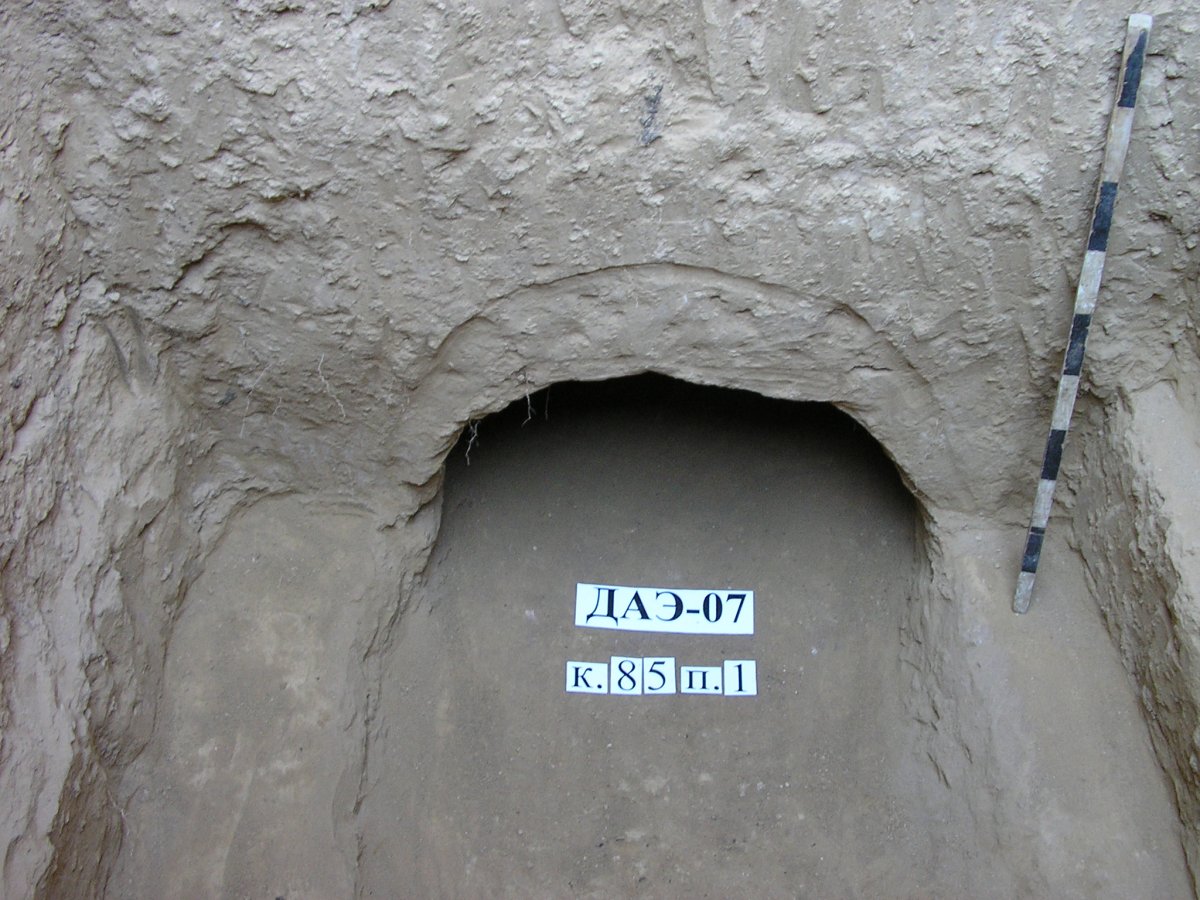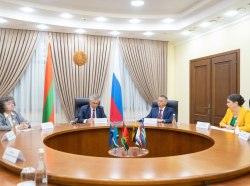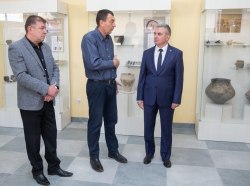Tiraspol, 18 May. /Novosti Pridnestrovya/. A mysterious V-shape sign has been discovered by Pridnestrovian archaeologists during the excavation of a Scythian tomb in the vicinity of Glinoye village, Slobodzeya. The ancient bas-relief was carved in clay above the entrance to the warrior's tomb, the excavations of which have already been described by Novosti Pridnestrovie. The head of the excavations, Vitaly Sinika, has shared a photograph of the sign with our agency.
As reported earlier, in April archaeologists began the rescue excavations of the Scythian burial site, which is part of a large necropolis of the 3rd — 2nd centuries BC. This necropolis was studied in previous years, but one mound was left out of sight as its earthwork had been destroyed and the burial was under a contemporary garbage dump. Works on the ancient site had lasted several weeks until the archaeologists found two inlet shafts leading to the tomb.
The excavation of one of the shafts led the archaeologists to the tomb of children-aristocrats where they found a number of artefacts, which has been mentioned in the previous article. However, they failed to reach the shaft's bottom. The fact is that clay padding of such shafts is very porous as opposed to solid soil. Thanks to that, archaeologists capture even the smallest graphic detail of the walls of an inlet shaft.
After a time, the researchers approached the entrance to an underground room where, as was later found, a Scythian warrior was buried. And it is here above the «door» to the tomb where the V-shaped bas-relief was discovered.
According to the archaeologists, it is not the first tomb in the necropolis whose entrance is decorated with a geometric figure. During the 18 years of excavations, 33 mysterious signs have been found in the town of the dead. But the figure found this year is the first of the kind.
Most of the bas-reliefs have the form of curved arches.
Some are semi-oval
Others can be described as triangular arches
In rare cases, the most incredible figures are found
Archaeologists have been debating up to now about what these ornaments carved in clay may symbolise. Surprisingly, such symbols have been found only in Pridnestrovie, despite the fact that the Scythian world covered a vast area from the southern Urals to the Danube Delta.
«The question about the semantics of the ornamentation of the Dormos mouth seems to be the most difficult at the moment, primarily because of the almost total lack of any comparative material," says Vitaly Sinika.
Today, archaeologists have several versions interpreting these mysterious signs. According to one of them, the geometric ornaments symbolise the transition from the world of the living to the world of the dead, a portal that links the two spaces. Another version assumes that these are security signs safeguarding the peace of the dead in the realm of shadows. A third hypothesis relates these figures to dwelling symbols.
The Scythian necropolis near Glinoye village was built 2,300−2,100 years ago and was studied by Pridnestrovian archaeologists in 1995−2012. In the area of 65 hectares, archaeologists discovered 181 burials grounds. This part of the necropolis has not been affected by the modern housing development. Indirect data indicate that the southern part of the necropolis is now under the village's residential area.
Thanks to the necropolis, Pridnestrovian archaeologists have proved that on the territory of Pridnestrovie Scythian culture developed throughout the 3rd-2nd centuries BC whereas in the Northern Black Sea region, except Crimea, it had faded two centuries earlier. The artefacts discovered in the necropolis testify to the remarkable cultural fusion of the Scythian, Thracian, Celtic and Ancient Greek worlds.
Alexander Koretsky.













